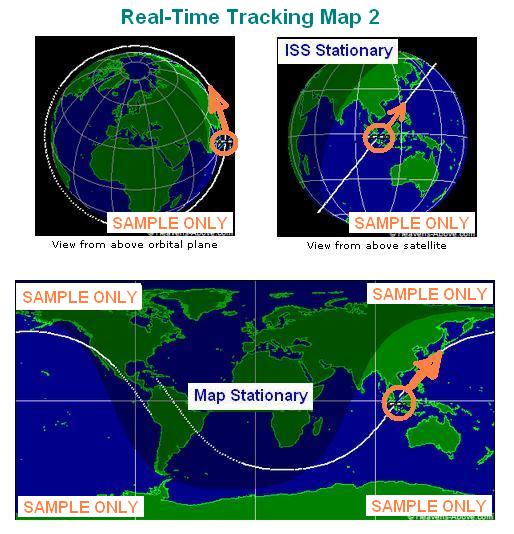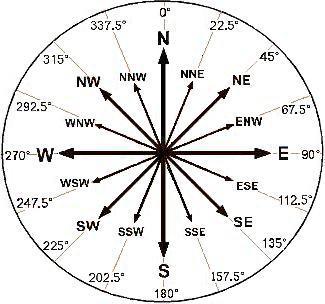ISS - International Space Station.
Sighting: 1, 2, 3, 4.
These links each open in a separate new Tab/Window; as do all of the links on this page.
-
Generates a page with a 5-day Sighting table based on where you are now-- determined by your computer's IP location.
-
-
Real-Time Tracking Map - Zoom-able.
Below the map on that page, put a check-mark in the check-box for 'Draw footprint'.
To be able to move the map independently of the ISS's present location, remove the check-mark from the check-box 'Keep selection centered'.
-
Real-Time Tracking Map 2 - Static SnapShot - Requires refreshing to update.
Refresh the page to update the image; since the image is a static, unchanging snapshot.

-
Cardinal Points upon the Earth.

ISS - Naked Eye Sighting - Wikipedia.org
Altitude varies:
205 mi to 270 mi.
330 km to 435 km.
Average speed:
17,100 miles-per-hour
4.75 miles-per-sec
---
27,600 km/h.
7.66 km/second.
Foot-print:
Diameter = 2780 miles = 4470 kilometers
Radius = 1400 miles = 2200 kilometers
Equator passes progress West, at a distance of 22.9-degrees longitude
"Each orbit shifts to the west by approximately 22.9° of longitude (measured at the position where the orbit crosses the equator)." Credit due: https://eol.jsc.nasa.gov/Tools/orbitTutorial.htm
? Distance in miles (kilometers) along equator for each pass is ?
22.9-degrees longitude = (22.9/360)* Earth-circumference
22.9-degrees longitude =
(22.9-degrees/360-degrees) * Earth-circumference =
0.0636111 * 24,900-miles =
1584-miles =
2550-kilometers
Earth-circumference = 0.0636111 * 7,917.5-miles (12740-kilometers) = 504-miles (810-kilometers)
When a direct communication link is used, contact time between the ISS and a ground station is limited to approximately 10 minutes per visible pass.
Atmospherc drag:
Drag from the residual atmosphere.
Orbital decay:
Height loss of ~2 km/month.
When the ISS enters the Earth's shadow, the main solar panels are rotated to minimise atmospheric aerodynamic drag, helping reduce orbital decay.
Reboost manoeuvres are done using the engines of the Zvezda module; or using visiting spacecraft.
